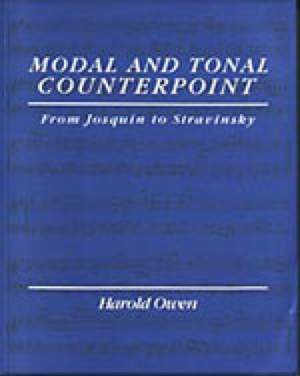Book
$153.50Special import
Contents
- Preface. PART ONE: INTRODUCTORY CONCEPTS.
- 1. The Nature of Polyphonic Music: Terms and General Concepts.
- 2. Polyphony and Style: A Comparison of Examples From the Fourteenth to the Twentieth Centuries. PART TWO: COUNTERPOINT IN THE LATE RENAISSANCE (1500-1600).
- 3. Two-Part Counterpoint: Basic Principles of Sixteenth-Century Style.
- 4. Two-Part Counterpoint: First and Second Species Counterpoint.
- 5. Two-Part Counterpoint: Third, Fourth, and Fifth Species.
- 6. Two-Part Motets: Setting of Text; Formal Considerations.
- 7. Two-Part Secular Music: Instrumental Duo; Canzonet.
- 8. Three-Part Counterpoint: Motet; Canzonet; Fantasia.
- 9. Four-Part Counterpoint: Dance Variations; Motet; Madrigal.
- 10. Polyphony in More Than Four Parts. PART THREE: COUNTERPOINT IN THE EARLY BAROQUE (1600-1700).
- 11. Stylistic Innovations: The Basso Continuo; the Emergence of Tonality; New Uses of Dissonance; Chromaticism.
- 12. Continuous Variations: Ground Bass; Chaconne; and Passacaglia.
- 13. Trio Texture: Two Trebles With Continuo.
- 14. Predecessors of the Fugue: Canzona; Ricercar; Fantasia; and Choral Fugato. PART FOUR: COUNTERPOINT IN THE LATE BAROQUE (1700-1750).
- 15. Review of Basic Concepts and
- Introduction to Eighteenth-Century Counterpoint.
- 16. Polyphonic Style in 1700: Melodic, Harmonic, and Temporal Considerations; Polyphonic Textures.
- 17. Cantus Firmus Compositions: The Chorals Prelude.
- 18. Invention: Bach''''s Two-
- Part I nventions.
- 19. Three-Part Counterpoint: Bach''''s Sinfonia''''s.
- 20. Canon: Two-Part Canon; Accompanied Canon; Canonic Chorale.
- 21. Fugue I: Overview; Subject and Response; Countersubject.
- 22. Fugue II: The Exposition in Three and Four Parts.
- 23. Fugue III: Development; Episodes; Contrapuntal Techniques and Devices; Stretto; Concluding Techniques.
- 24. Genres Using Fugal Technique: Gigue; Fugal Sonata Movement; Fugal Chorus. PART FIVE: POLYPHONY IN THE CLASSICAL AND ROMANTIC ERAS (1750-1900).
- 25. Polyphony in the Classical Era: Counterpoint in Haydn, Mozart, and Beethoven.
- 26. Polyphony in the Romantic Era: Counterpoint in Mendelssohn, Brahms, Franck, and Others. PART SIX: POLYPHONY IN THE FIRST HALF OF THE TWENTIETH CENTURY.
- 27. Serial and Atonal Counterpoint.
- 28. Counterpoint in Hindemith, Bartok, and Stravinsky.
- Appendix A: Identification of Examples in
- Chapter 1 .
- Appendix B: The Ecclesiastical Modes and the Hexacord System.
- Appendix C: A Guide to the Interpretation of Figured Bass Symbols. Glossary. Discography. Selected Bibliography. List of Musical Examples for Discussion. Index.



